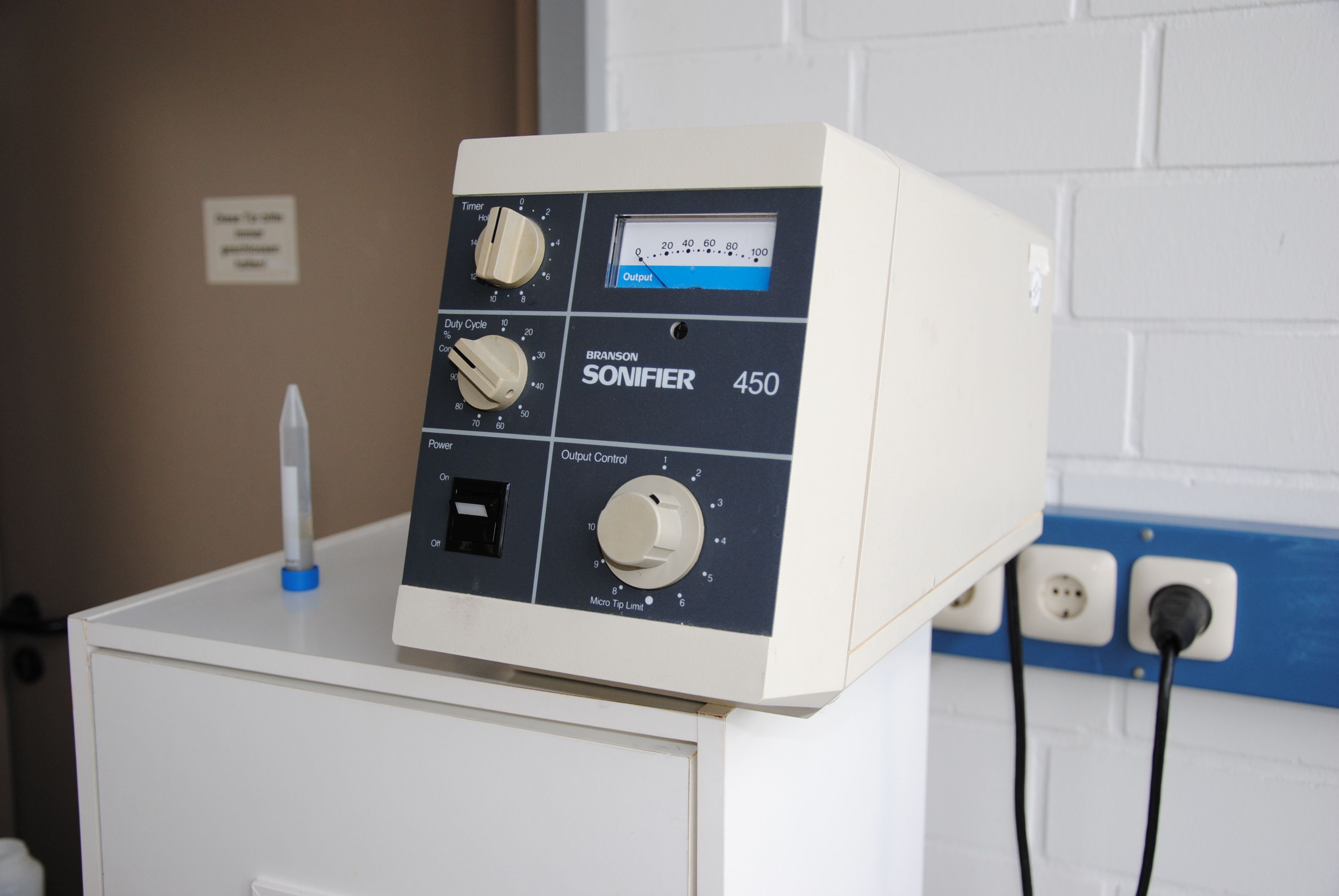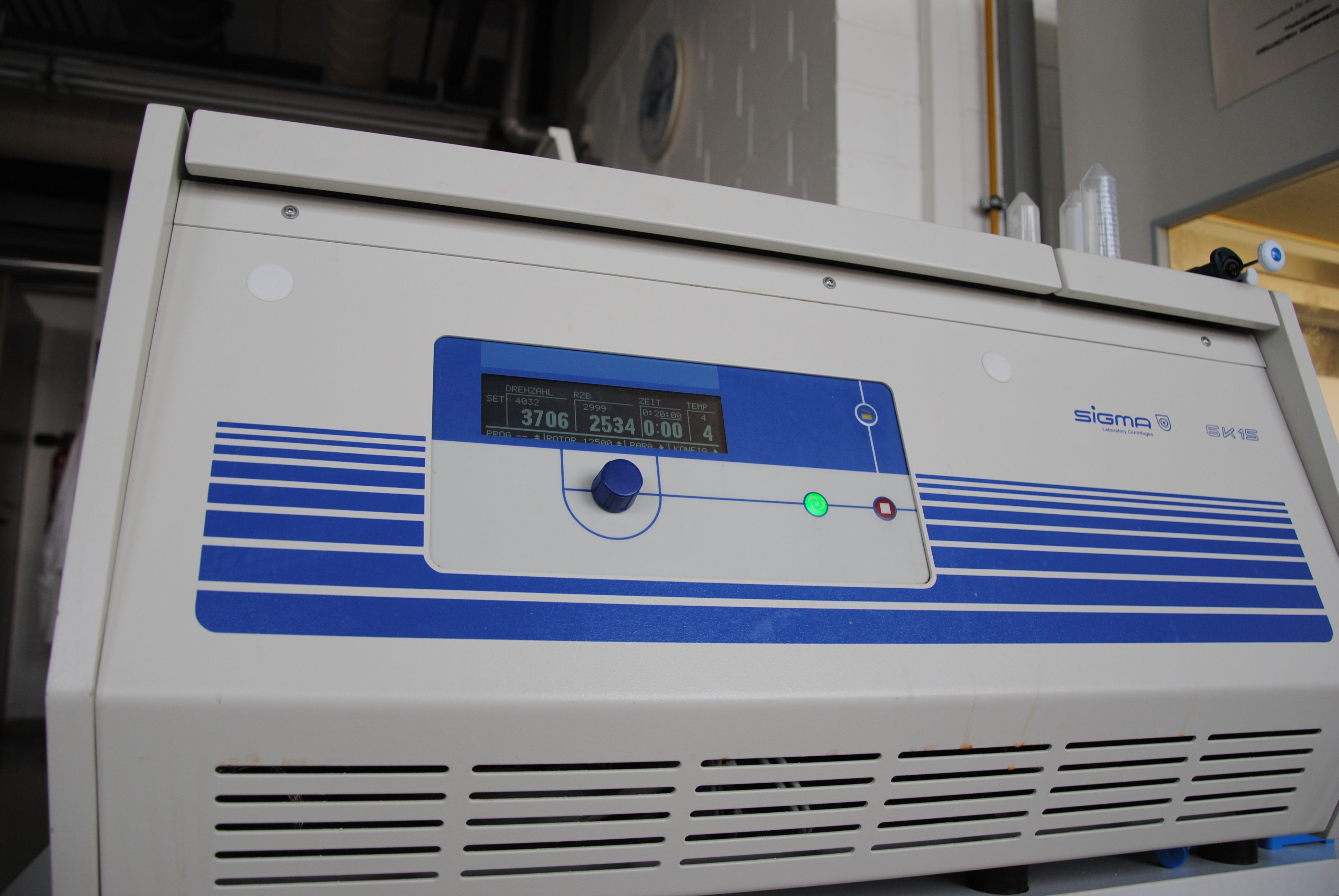Team:Bielefeld-Germany/Results/S-Layer/Guide/4a
From 2011.igem.org
(Created page with "{{Bielefeld_2011_Header}} =Small scale cell disruption= [[Image:IGEM-Bielefeld2011-Sonifier.JPG|400px|thumb|center|A Branson Sonifier 450 which we used to disrupt our cells in ...") |
|||
| (6 intermediate revisions not shown) | |||
| Line 1: | Line 1: | ||
{{Bielefeld_2011_Header}} | {{Bielefeld_2011_Header}} | ||
| - | + | <html><img src="https://static.igem.org/mediawiki/2011/2/28/Bielefeld-header-guide.png"/><p></p></html> | |
=Small scale cell disruption= | =Small scale cell disruption= | ||
| - | [[Image:IGEM-Bielefeld2011-Sonifier.JPG| | + | [[Image:IGEM-Bielefeld2011-Sonifier.JPG|430px|thumb|left|A Branson Sonifier 450 which we used to disrupt our cells in small scale.]] [[Image:IGEM-Bielefeld2011-Centrifuge.JPG|430px|thumb|left|A Sigma 6K15 centrifuge which we used in our project.]] |
| + | |||
| + | <br style="clear: both" /> | ||
| + | |||
| + | The S-layer fusion proteins form inclusion bodies in the ''E. coli'' cells (at least most of them). Inclusion bodies have the advantage that they are relatively easy to clean-up and are resistant to proteases. But inclusion bodies are unsoluble so they have to be solubilized by urea or guanidin hydrochloride. In addition, these chemicals suppress the self-assembly ability of the S-layer proteins which leeds to monomeric S-layer proteins. The cell disruption is carried out in a buffer containing 6 M urea, 50 mM phosphate buffer (pH 7.4), 300 mM sodium chloride and 10 mM imidazol. The cells are lyzed by sonification (5 times 2 minutes on ice, max. 20 W, cooling on ice between these steps). Afterwards the lysate is incubated for 1 h at 4 °C on a shaker or vertical rotator to solubilize the inclusion bodies. The cell debris is removed by centrifugation and the supernatant is used for further purification. | ||
| + | |||
| + | Only purified S-layer proteins will self-assemble - [[Team:Bielefeld-Germany/Results/S-Layer/Guide/5 | click here for further purification steps]]. | ||
| + | |||
| + | <html> | ||
| + | <div style="text-align:center; width:535px; margin-left:auto; margin-right:auto;"> | ||
| + | <img id="Image-Maps_8201110281849269" src="https://static.igem.org/mediawiki/2011/7/7f/Bielefeld-Germany-2011-Navigationbar_a_end.png" usemap="#Image-Maps_8201110281849269" border="0" width="535" height="82" alt="" /> | ||
| + | <map id="_Image-Maps_8201110281849269" name="Image-Maps_8201110281849269"> | ||
| + | <area shape="rect" coords="22,12,170,62" href="https://2011.igem.org/Team:Bielefeld-Germany/Results/S-Layer/Guide/3a" alt="Previous page" title="Previous page" /> | ||
| + | <area shape="rect" coords="182,7,330,57" href="https://2011.igem.org/wiki/index.php?title=Team:Bielefeld-Germany/Results/S-Layer/Guide" alt="Return to beginning" title="Return to beginning" /> | ||
| + | <area shape="rect" coords="353,10,501,60" href="https://2011.igem.org/Team:Bielefeld-Germany/Results/S-Layer/Guide/5" alt="Next page" title="Next page" /> | ||
| + | </map> | ||
| + | </div> | ||
| + | </html> | ||
Latest revision as of 02:48, 29 October 2011


Small scale cell disruption
The S-layer fusion proteins form inclusion bodies in the E. coli cells (at least most of them). Inclusion bodies have the advantage that they are relatively easy to clean-up and are resistant to proteases. But inclusion bodies are unsoluble so they have to be solubilized by urea or guanidin hydrochloride. In addition, these chemicals suppress the self-assembly ability of the S-layer proteins which leeds to monomeric S-layer proteins. The cell disruption is carried out in a buffer containing 6 M urea, 50 mM phosphate buffer (pH 7.4), 300 mM sodium chloride and 10 mM imidazol. The cells are lyzed by sonification (5 times 2 minutes on ice, max. 20 W, cooling on ice between these steps). Afterwards the lysate is incubated for 1 h at 4 °C on a shaker or vertical rotator to solubilize the inclusion bodies. The cell debris is removed by centrifugation and the supernatant is used for further purification.
Only purified S-layer proteins will self-assemble - click here for further purification steps.

 "
"


